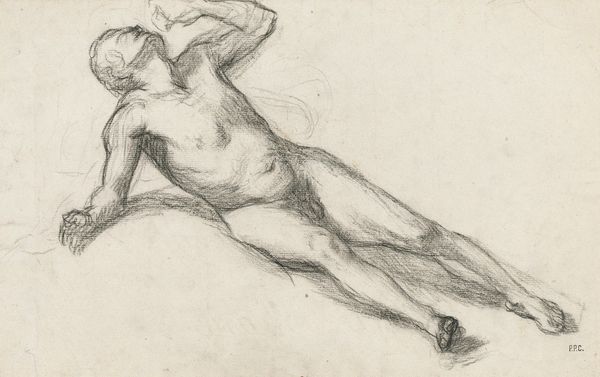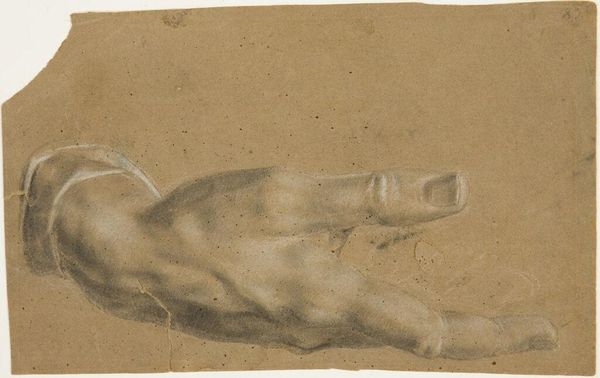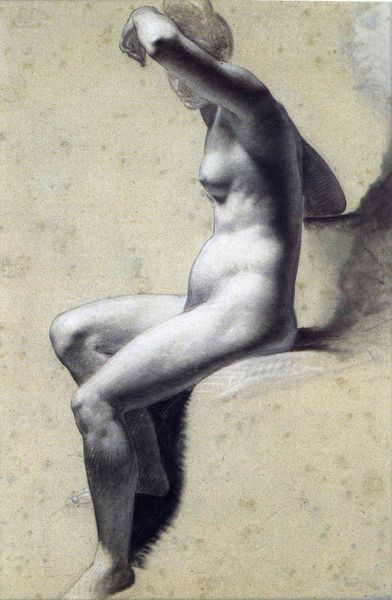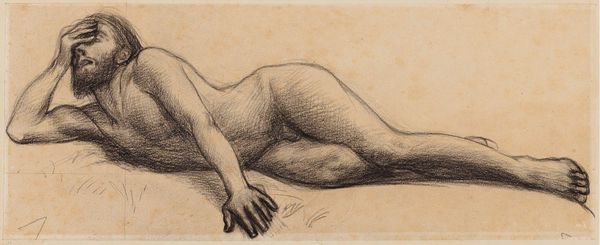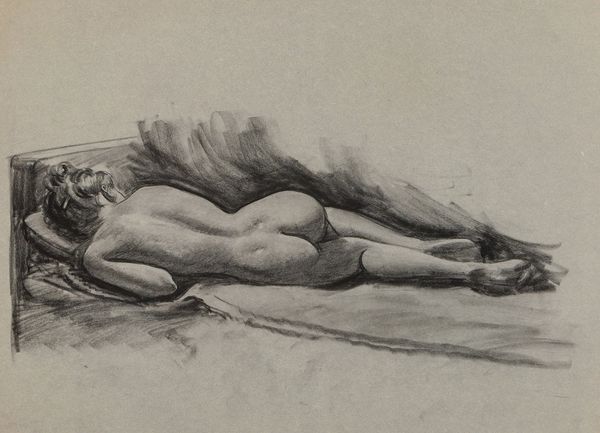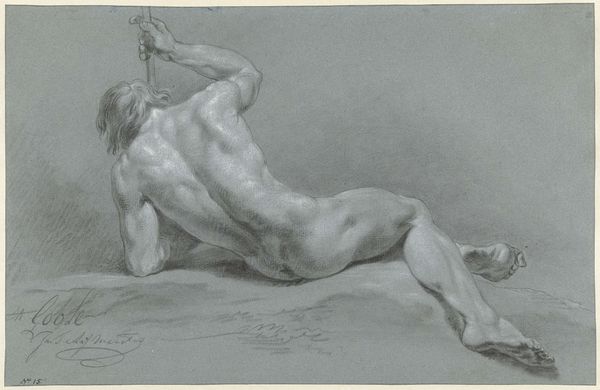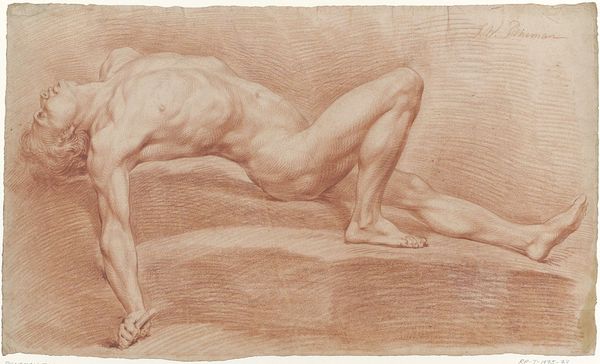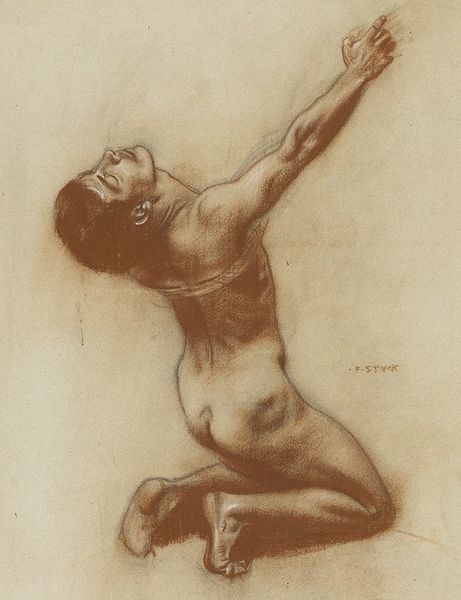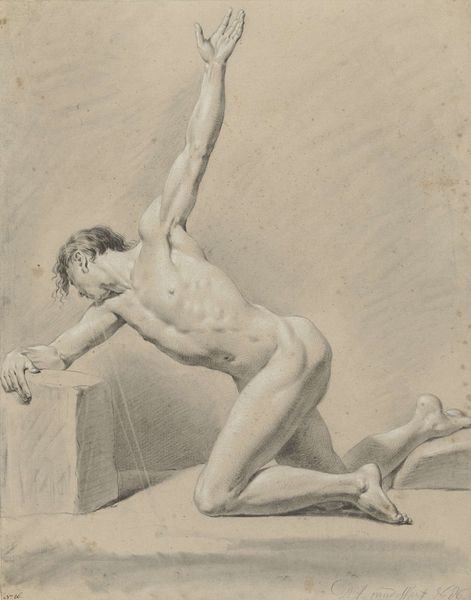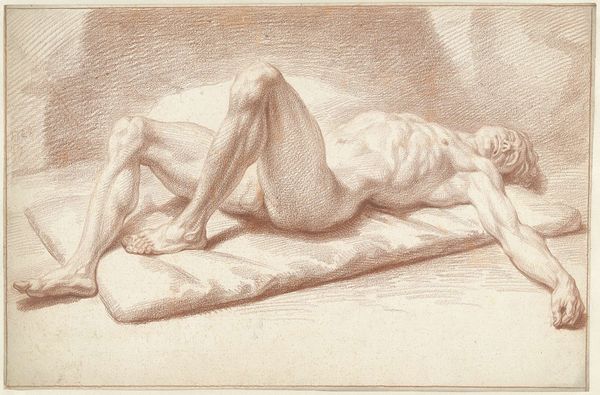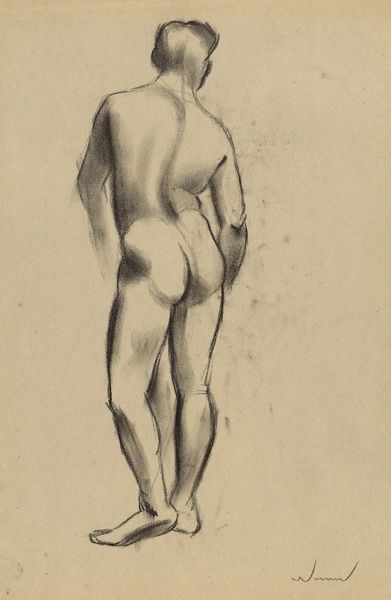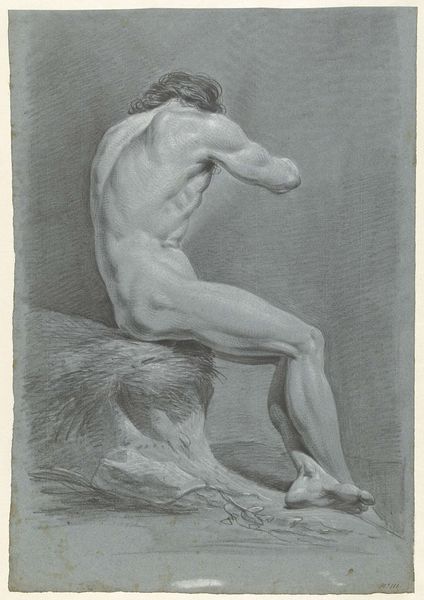
drawing, charcoal
#
drawing
#
figuration
#
romanticism
#
charcoal
#
charcoal
#
nude
Copyright: Public Domain: Artvee
Curator: The artwork before us is titled "Nu D'homme," created by Camille Corot in 1834, rendered skillfully in charcoal. Editor: What strikes me immediately is the texture, how the charcoal catches the light. The fabric, the skin… it suggests a kind of labor involved in even depicting leisure, doesn’t it? And look at those visible pores— almost gritty, definitely physical. Curator: Indeed. Focus on how Corot uses charcoal to modulate light and shadow across the figure. The careful hatching defines the musculature and the soft chiaroscuro imbues a sense of classical contrapposto despite the informal pose. Editor: That contrapposto is intriguing given the likely circumstances of production. A male nude rendered in charcoal, that material reality pushes back on high art’s supposedly elevated themes. Who commissioned this, and under what conditions was the model, perhaps an anonymous laborer himself, compelled to pose? Curator: Those questions open a discourse about class and artistic patronage of the time, however, if we concentrate on Corot’s formal strategies we can observe the drawing operates on a principle of classical form subverted through a Romantic sensibility. Notice how his command of line suggests volume, and proportion conveys this dynamic energy typical of the style? Editor: I'm drawn to the pillows. Not just as supporting elements, but in what the softness signals in contrast to the male body. What material privileges enabled such an object in both reality and representation, and who benefits most from them? This goes beyond mere formalism, it questions production, value, and even assumptions surrounding the male nude at that time. Curator: A provocative suggestion, however, I argue the subject of nude men and form have an appeal that lasts regardless of context. It's Corot's attention to shading and to classical compositions that holds lasting art historical value. Editor: Maybe our dialogue reveals how formalism and materiality enrich each other, offering a more complex reading of history’s narratives. Curator: Perhaps our varied views on Corot only go to highlight how rich artwork can be through analysis.
Comments
No comments
Be the first to comment and join the conversation on the ultimate creative platform.
